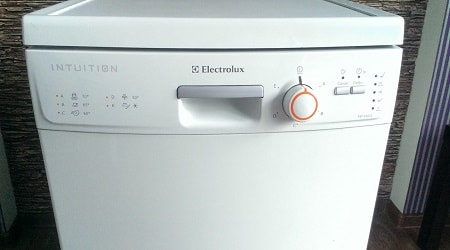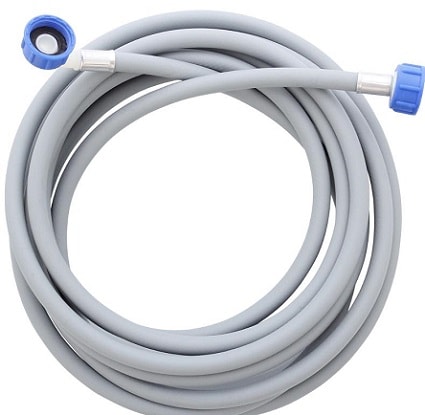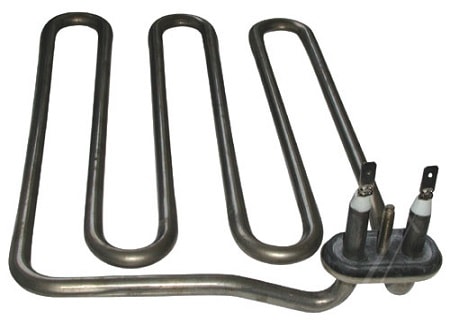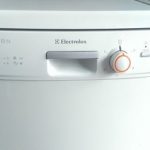Dishwashers from the Electrolux company are quite common in our country. Despite the high quality of components and assemblies of the Electrolux dishwasher, it, like other units and devices, can break down and requires utmost attention and prevention. Before proceeding with the repair, it is necessary to diagnose the problems, determine the typical ones and learn about the existing repair methods. In this article we will try to tell you how to repair Electrolux dishwashers and other subtleties associated with this process.
Consider the main breakdowns of machines

Most of the dishwashers supplied to the market of our country are manufactured in Poland and account for about 90%. The quality of their components and assembly can be compared with similar units of German and Swedish companies, however, as they say, there is no need to choose. Most experts point out the following advantages of household appliances manufactured by Electrolux:
- all components are made exclusively from high quality raw materials;
- the development of circulation pumps was approached really reasonably, they had a high operating resource;
- the manufacturer is sensitive to small details, such as: wires, clamps, terminals, rubber bands and filters, which in turn made it possible to increase the period of trouble-free operation of the dishwasher.
There were no especially critical drawbacks during the operation of the dishwasher, one of them, like everyone else, has typical breakdowns, from which it is rather difficult to protect themselves. We list them below:
- clogging of drain and filler pipes;
- failures in the water intake program;
- problems with the quality of dishwashing;
- TEN (heating element) does not heat up the water sufficiently.
![]() See also - The dishwasher does not dry dishes or heat the water
See also - The dishwasher does not dry dishes or heat the water
Filling and drain connections

Drain and filler pipes can become clogged not only in Electrolux dishwashers, this is a common problem with these units. The speed at which they will clog depends on the quality of the water, the content of minerals and metals in the water. This is due to the fact that they settle on the walls, after which they simply clog them.
If this breakdown is found, the repair will be a fairly simple process. You will need to clean the clogged filter, after which we recommend that you perform this operation regularly, so as not to face a problem in the future. The use of chemicals such as Kalgon does not in any way interfere with the build-up of deposits on the filter and pipes. It only protects internal components.
In case you have rather hard water, you need to monitor the dishwasher more carefully and clean the above-described parts more often. How exactly can this be done?
- turn off the water with a tee tap;
- disconnect the inlet hose along with the flow filter on both sides of the tee tap and dishwasher;
- dismantle the small flow filter from the dishwasher body (it is located at the beginning of the filling path, in the place where the inlet hose is installed);
- clean and then rinse the hose together with the filters with running water;
- assemble the device.
It is worth noting that when installing a dishwasher, some do not install a flow filter directly between the tee tap and the hose. In this situation, only one filter will be clogged, the one that is installed at the beginning of the filler pipe.
Much more often, the nozzles and hoses of the drain track, garbage filters are clogged. Experts recommend that users make periodic inspections of these spare parts, at least once every two months. In the case when the dishwasher is used intensively, namely several times a day, it must be checked every 1-1.5 months. In order to protect the nodes from clogging, you must adhere to the following simple rules:
- Remove large food residues with a paper towel before placing the dishes inside the unit.
- Use only high-quality detergents, or make them yourself.
- Check the container in which the regenerating salts are located, it should never reach a critical level.
- After each washing process, visually inspect the waste filters and clean them if necessary.
Heating element problems

If you notice that the water in the dishwasher does not heat up enough, then most likely there is a problem with the heating element, or with a temperature sensor or other control modules. Electrolux dishwashers are quite sensitive to voltage surges and oversaturation. What can this lead to?
In the best case, you will get off with a blown fuse, at worst, several triacs of the control board may burn out. After this, the control module simply will not be able to send signals to the heating element, or it will do it with a delay or perform it incorrectly. Repair of the arisen malfunctions quite time consuming and expensive occupation, you need:
- disassemble the dishwasher in half in order to get to the TEN;
- check the integrity of the wires going to Teng and measure the resistance with a multimeter;
- check the parts of the control module, in case of a malfunction, replace with a new one.
We would like to note that in order to protect household appliances and other appliances from voltage surges, you can use a voltage stabilizer, which is purchased separately.
If you do not understand this topic, the best solution would be to call a specialist who accurately diagnoses breakdowns and fixes it as soon as possible.
The dishwasher has not completed the washing program
Quite often, during the execution of the washing program, it simply freezes. Most often, to solve the problem, it is necessary to reboot the dishwasher, to put it simply, it is necessary to turn off the device for just a couple of minutes, and then return the power supply to it again.
If this problem repeats with all dishwashing programs, it is necessary to call a specialist who will thoroughly check everything, and if a defect or defect is found, replace the damaged part.
Note! On some dishwasher models Electrolux replacing a control module costs a lot of money. In such a situation, it will be easier for you to buy a new dishwasher than to replace a faulty control module.
However, do not be upset, this problem is most often associated with an error in the operation of the following sensors, namely: pressostat, aquasensor and others. Sometimes the electrical network is involved in the failure of the entire group of sensors.
In this article, we looked at how to repair Electrolux dishwashers with our own hands. However, remember that if you do not understand anything about technology, the best solution would be to turn to specialists who will carry out all the repairs themselves, and you will not have to waste your nerves and funds on unjustified actions.
![]() See also - Reviews about dishwashers "Electrolux"
See also - Reviews about dishwashers "Electrolux"

